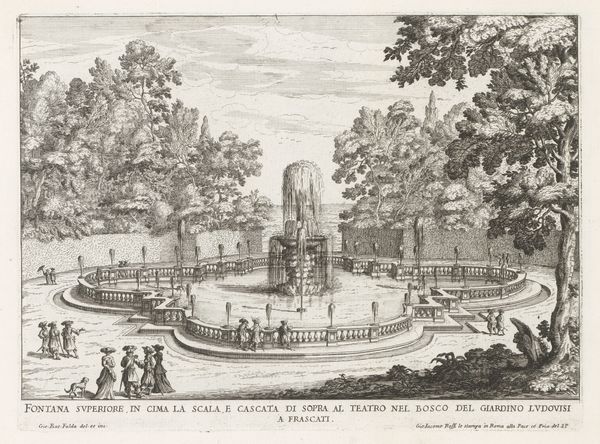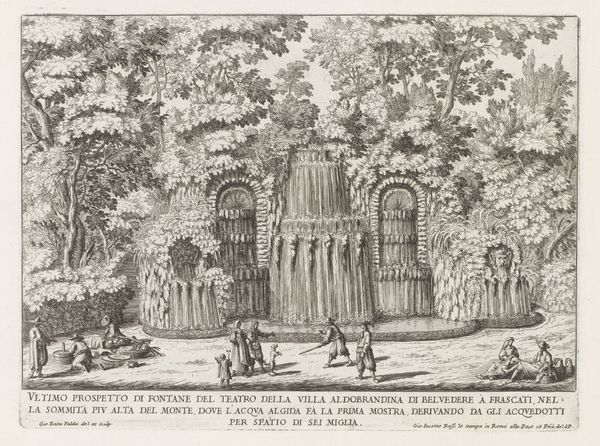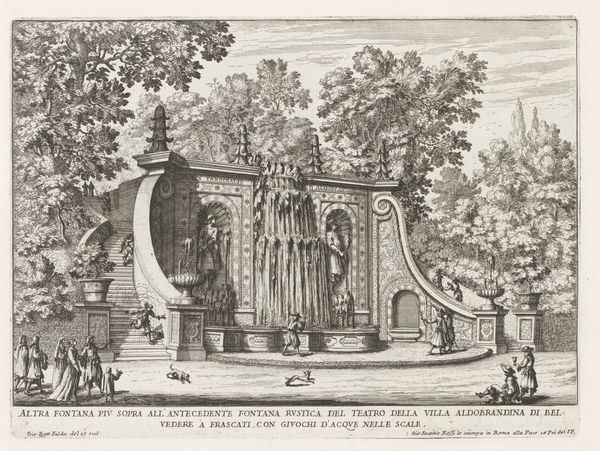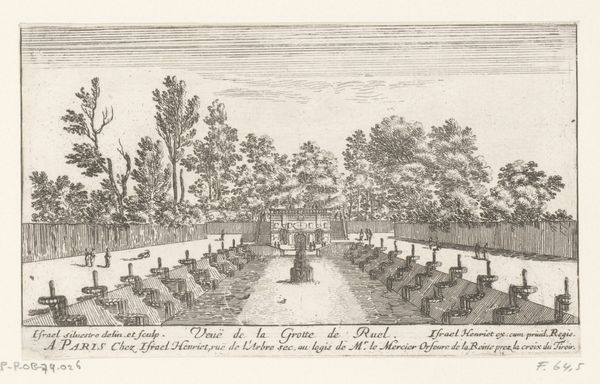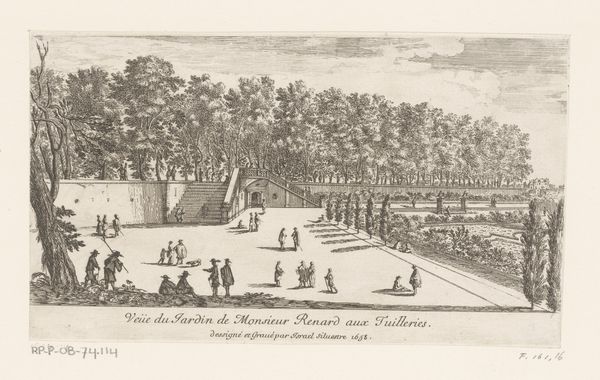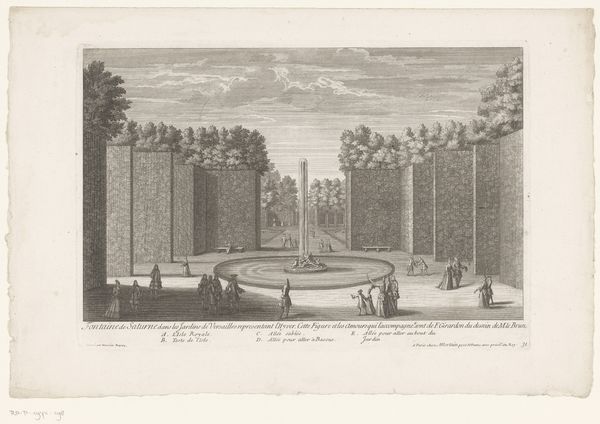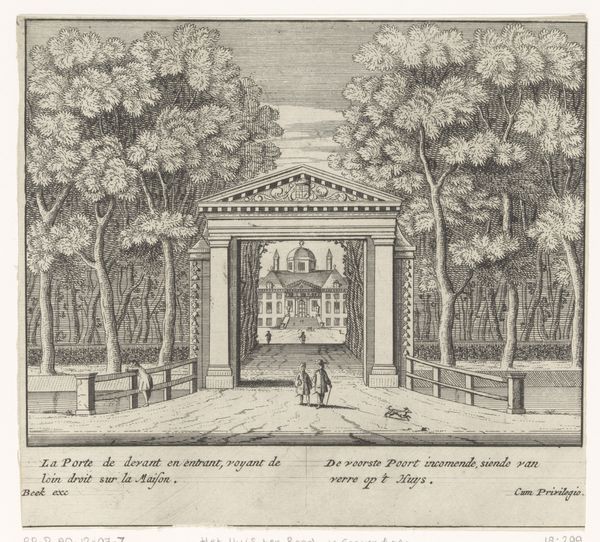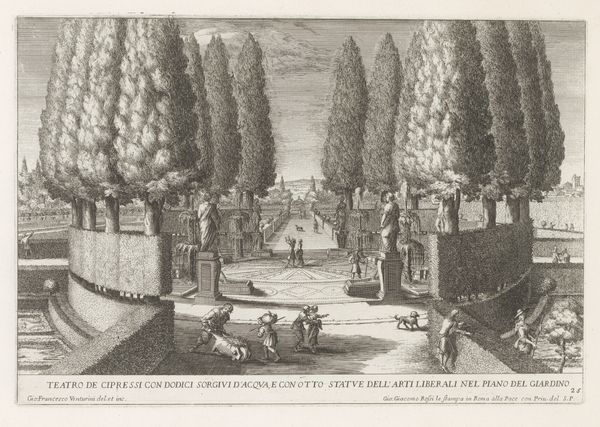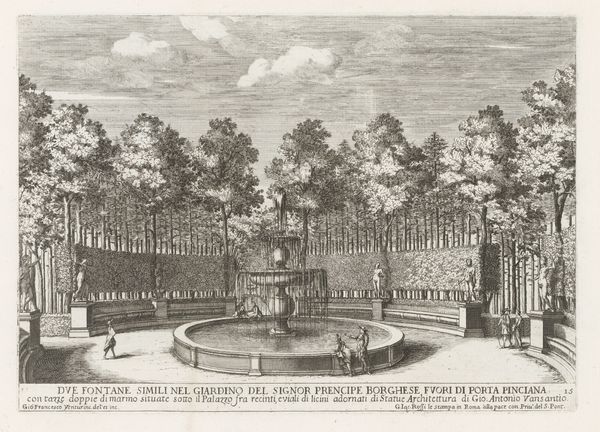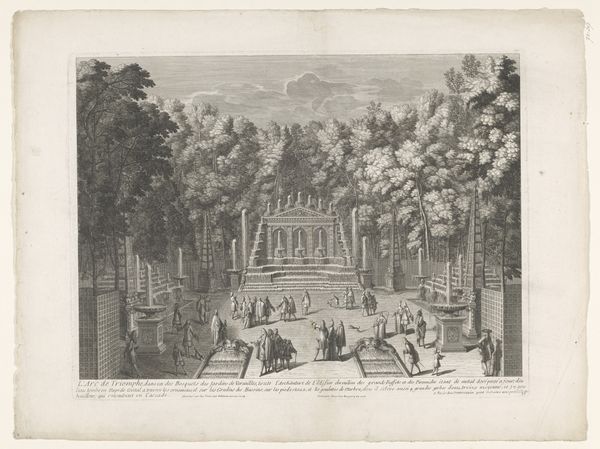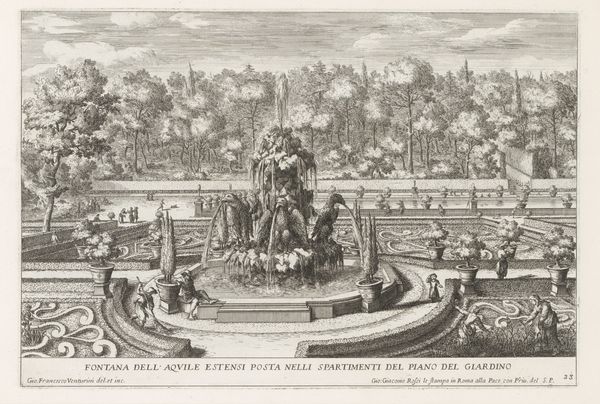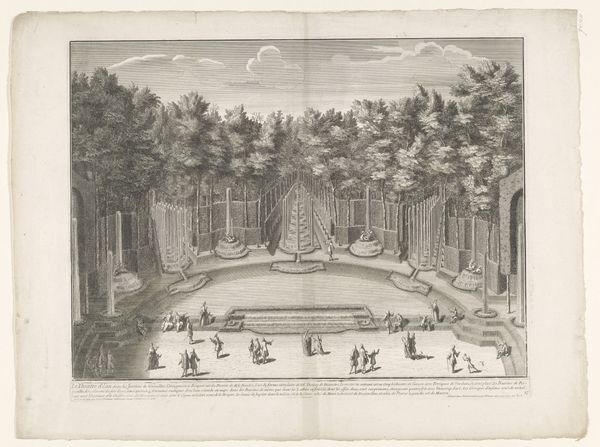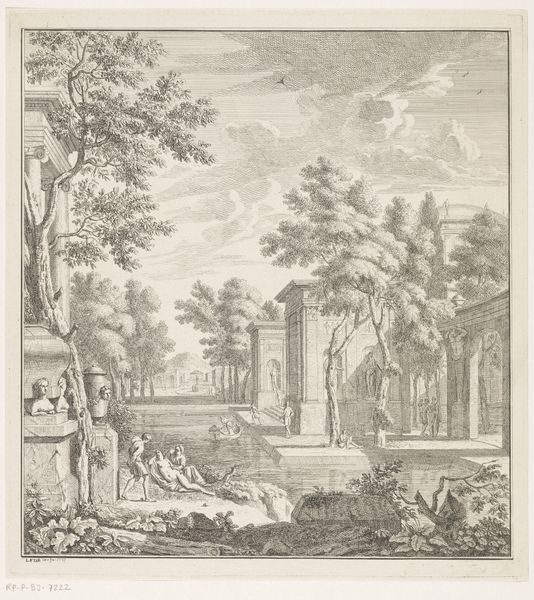
engraving
#
baroque
#
old engraving style
#
landscape
#
form
#
classicism
#
line
#
cityscape
#
history-painting
#
engraving
#
realism
Dimensions: height 212 mm, width 310 mm
Copyright: Rijks Museum: Open Domain
Curator: Just look at that exquisite linework. The engraving before us, "Fontein van Narcissus in de Villa Borghese te Rome," dating back to somewhere between 1653 and 1691, is crafted by the hand of Giovanni Francesco Venturini. The detail he's captured is extraordinary. Editor: It does have an uncanny precision, almost sterile in its perfection. But honestly, my first impression is of an elaborate stage set. Narcissus, right there in the center, like a spotlight is shining on him as if it were the lead actor bowing before an elegant backdrop. Curator: An astute observation. Venturini, through this print, offers a window into the idealized landscapes of the Roman Baroque. Observe how the formal garden, the statuary, and even the figures are carefully arranged. Consider that in classical interpretations, the story of Narcissus symbolizes vanity and self-obsession; do you believe he is presented here as a symbol? Editor: Well, placed on a pedestal like that, absolutely! There’s a sort of staged drama to the scene – a drama that speaks to performance and image, of being *seen.* This Borghese garden is about cultivated beauty and spectacle. Perhaps Narcissus is less about vanity and more about the seductive nature of illusion itself. Curator: Interesting perspective. Consider, too, how the formal arrangement imposes control on nature. There is a tension between wildness and the desire for an imposed human order. Narcissus’ reflection might then extend beyond simple vanity to something larger: mankind's distorted image of nature and control of the natural. Editor: Control definitely feels like a key element here. That precise engraving is a form of control. The statues and the symmetrical arrangement are a kind of dominance too. It's about showcasing power, both artistic and societal. Venturini doesn't just reproduce reality; he’s creating an *effect.* The details – the precise placement of shadows, each little leaf on the trees– it’s designed for impact. It makes one wonder, what are the repercussions when art aims at nothing else, nothing deeper? Curator: It's that quest for depth, isn't it, that keeps us looking, discussing, questioning what’s presented before us? I believe the work gives us much to ponder concerning order, beauty, power, and the human condition itself. Editor: Exactly. It’s that perfect, shiny surface that compels you to scratch deeper, looking for the truth beneath the sheen.
Comments
No comments
Be the first to comment and join the conversation on the ultimate creative platform.
